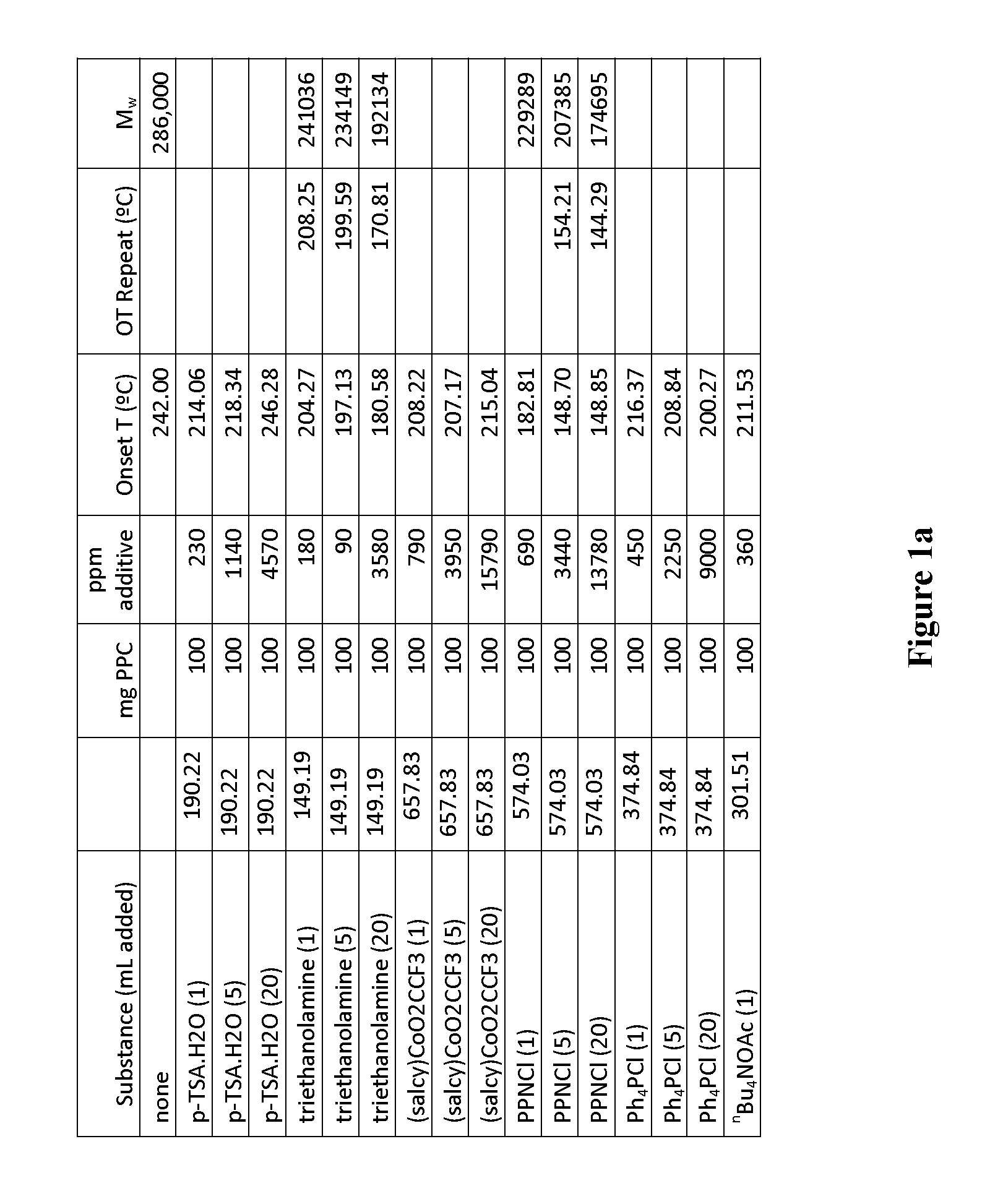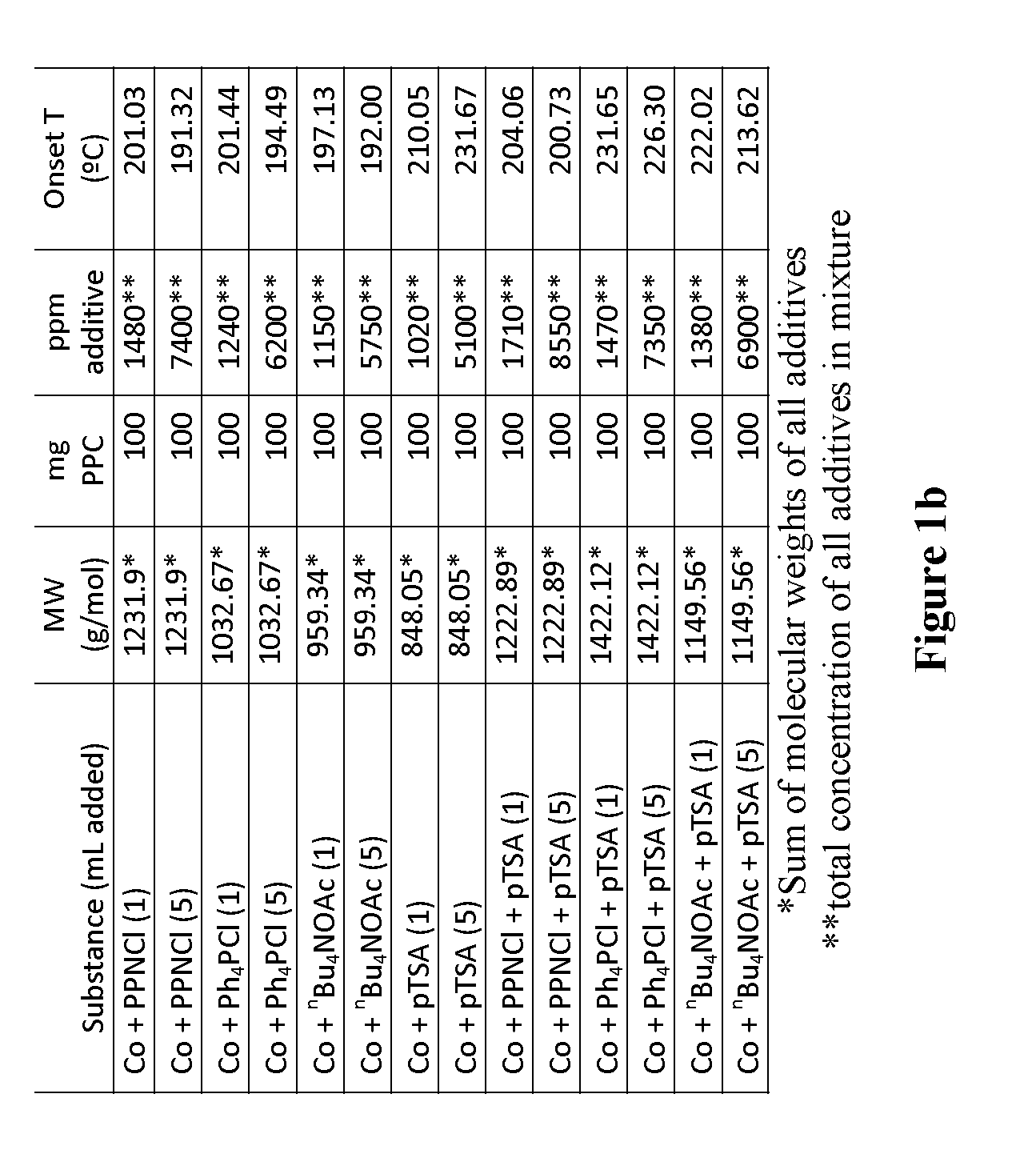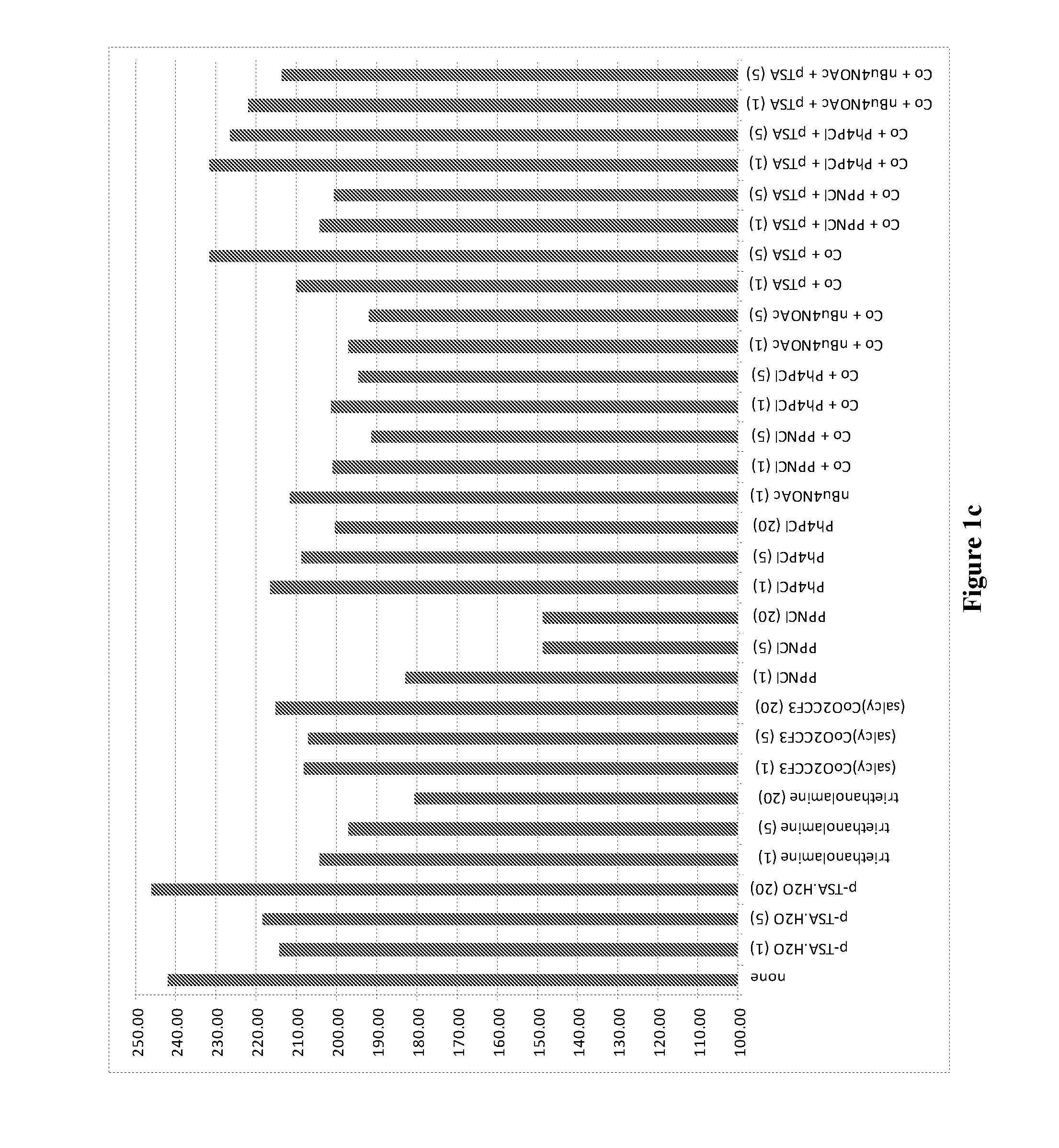Tunable polymer compositions
a polymer composition and composition technology, applied in the field of polymer compositions, can solve the problems of lack of generality in the method of polymerization, and the use of acid, which may not be ideal for some applications,
- Summary
- Abstract
- Description
- Claims
- Application Information
AI Technical Summary
Benefits of technology
Problems solved by technology
Method used
Image
Examples
example 1
Effects of Selected Agents on PPC Thermal Degradation
[0193]A sampling of additives, added as dilute acetone solutions of PPC (quenched with PTSA, solvent exchanged into acetone and pumped through a column of hydrogen form Dowex Marathon® MSC) were examined by TGA. The additives to be tested were prepared as 0.12 mM stock solutions in acetone. 1 mL of additive solution was then combined with 100 mg of PPC (667 mg of 15% acetone solution in). The well-mixed solutions were then dried, either in air or in a vacuum oven, and analyzed by TGA.
[0194]From FIGS. 1a-c, it can be seen that many additives which were examined had little effect on the onset of decomposition temperature at these concentrations. The principle exceptions were PPNCl and tetrabutylammonium acetate, both of which were studied in greater detail (see ensuing Examples). Higher concentration samples of tetrabutylammonium acetate (5 and 20 equivalents) decomposed during the drying step in the vacuum oven (temperature unknown...
example 2
Effects of Tetrabutylammonium Acetate on PPC Thermal Degradation
[0198]667 mg of 15% by weight PPC in acetone solution was placed in a 20 mL scintillation vial, allowed to air dry overnight and analyzed by TGA (thermogravimetric analysis). The TGA results indicated an onset of thermal degradation temperature of 225.33° C. (see FIGS. 1a and 1b, “none”).
[0199]A solution containing 36.2 mg of tetrabutylammonium acetate in 1 L of acetone was prepared. The resulting solution was used in the experiments described below. The amount of solution used is indicated parenthetically in FIGS. 1a and 1b.
[0200]1.00 mL of the tetrabutylammonium acetate solution was combined with 667 mg of a 15% solution of PPC (100.0 mg) in acetone in a 20 mL scintillation vial. The sample was mixed by shaking the vial, allowed to air dry overnight and the residue analyzed by TGA. The TGA results indicated an onset of thermal degradation temperature of 213.45° C. (see FIGS. 1a and 1b).
[0201]1.25 mL of the tetrabutyl...
example 3
Effects of bis(triphenylphosphoranylidene)ammonium chloride (PPNCl) on PPC thermal degradation
[0207]A solution containing 68.9 mg of bis(triphenylphosphoranylidene)ammonium chloride in 1 L of acetone was prepared. The resulting solution was used in the experiments described below. The amount of solution used is indicated parenthetically in FIGS. 1a and 1b.
[0208]1.00 mL of the bis(triphenylphosphoranylidene)ammonium chloride solution was combined with 667 mg of a 15% solution of PPC (100.0 mg, as described above) in acetone in a 20 mL scintillation vial. The sample was mixed by shaking the vial, allowed to air dry overnight and analyzed by TGA. The TGA results indicated an onset of thermal degradation temperature of 200.21° C. (see FIGS. 1a and 1b).
[0209]1.50 mL of the bis(triphenylphosphoranylidene)ammonium chloride solution was combined with 667 mg of a 15% solution of PPC (100.0 mg) in acetone in a 20 mL scintillation vial. The sample was mixed by shaking the vial, allowed to air...
PUM
| Property | Measurement | Unit |
|---|---|---|
| Temperature | aaaaa | aaaaa |
| Temperature | aaaaa | aaaaa |
| Temperature | aaaaa | aaaaa |
Abstract
Description
Claims
Application Information
 Login to View More
Login to View More - R&D
- Intellectual Property
- Life Sciences
- Materials
- Tech Scout
- Unparalleled Data Quality
- Higher Quality Content
- 60% Fewer Hallucinations
Browse by: Latest US Patents, China's latest patents, Technical Efficacy Thesaurus, Application Domain, Technology Topic, Popular Technical Reports.
© 2025 PatSnap. All rights reserved.Legal|Privacy policy|Modern Slavery Act Transparency Statement|Sitemap|About US| Contact US: help@patsnap.com



